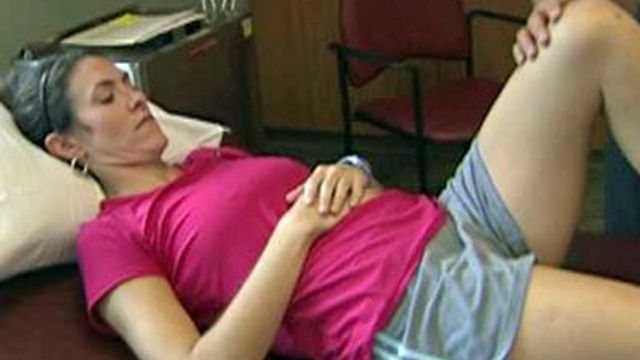Women can fight knee injuries
Women are more susceptible to the most common knee injury in sports but can take measures to prevent injuries and speed recovery.
Posted — UpdatedWomen have a different muscle balance around the knee than men, and hormones can make women's knees more lax. That makes it easier for them to tear an anterior cruciate ligament, or ACL.
Allison Bingham, a triathlete and church youth pastor, injured her ACL while playing football with kids.
"A youth came over and was trying to tackle and took my knee out in the process, and I just felt something buckle," she said.
Bingham wasn't sure if her knee was injured, but then it began to swell, so she got it checked out.
"My whole knee was moving all around, which was an indication I had torn my ACL," she said.
The ACL provides crucial functions: "It actually helps stabilize the knee from the tibia moving forward below the femur," said Dr. Mark Wood, an orthopedic surgeon at WakeMed.
Seventy percent of ACL injuries don't come from contact, such as getting hit, but from landing awkwardly or changing direction too quickly, Wood said.
"Special muscle strengthening exercises and even learning how to jump differently and land differently have decreased the amount of ACL injuries in women," he said.
Sports trainers recommended that women land on two feet, instead of one. To change direction while running, women should slow to a stop in a stutter step, and then change direction.
Women's quadriceps tend to be more developed than the muscles on the back of their legs, creating an imbalance that can strain muscles. That imbalance can be corrected by strength training.
Bingham would like to speed up her recovery so she can start training for triathlons again. Her fitness before the injury is on her side, as are regular visits to WakeMed's therapy room at the Alexander Family YMCA.
"I'm over there about an hour and a half, 5 days a week, doing cardio and strength training," Bingham said.
Another road to quicker recovery is using cadaver tissue to replace the ACL rather than spare ligament and bone from a patient's own body.
"There's less surgical pain, earlier range of motion, earlier recovery and earlier return to work," Wood said.
Bingham has a minimum of 4 to 6 months of recovery and rehabilitation before she can return to her full, active lifestyle.
• Credits
Copyright 2024 by Capitol Broadcasting Company. All rights reserved. This material may not be published, broadcast, rewritten or redistributed.





